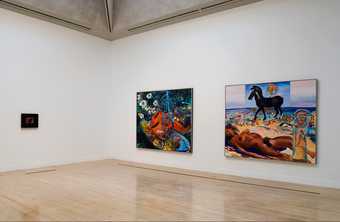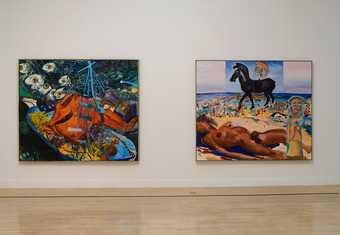
Installation view of Turner Prize: a Retrospective exhibition
Photo: Tate Photography © Tate 2007
The motivation to establish a prize came from the Patrons of New Art, a group of private individuals formed in 1982 to promote contemporary art at the Tate Gallery. The Tate Director at the time, Alan Bowness, was enthusiastic about the idea of an award that ‘would help draw greater public discussion to new art, in much the same way as the Booker Prize has helped the novel’.
From the outset in 1984, opinions were divided over what to call the prize. It was eventually named after the early nineteenth-century painter J.M.W. Turner in response to his unfulfilled wish to set up an award for younger artists.
At this time, an independent jury (that changed annually) nominated artists whom they believed had ‘made the greatest contribution to art in Britain in the previous twelve months’. When painter Malcolm Morley was announced the winner, some critics questioned his relevance to British art as he had lived and worked in America for the past twenty years.
Artists and works on display:

Installation view of Turner Prize: a Retrospective exhibition showing Malcolm Morley's Day Fishing in Heraklion 1983 and Cradle of Civilization with American Woman 1982
Photo: Tate Photography © Tate 2007
Malcolm Morley
Day Fishing in Heraklion 1983
Oil on canvas
Private Collection
Cradle of Civilization with American Woman 1982
Oil on canvas
Collection Centre Pompidou
These two paintings are part of a body of work inspired by Morley’s trip to Greece in the summer of 1982. They bring together an interest in Greek mythology with representations of contemporary life. These influences are apparent in Cradle of Civilization and the entire scene reappears in a subsequent painting, Farewell to Crete 1984, which was exhibited in the first Turner Prize exhibition accompanied by Day Fishing in Heraklion. The latter’s title pays homage to Picasso’s painting Night Fishing at Antibes 1939. The large monstrous fish which dominates the boat, depicted with raw, almost frenzied brushstrokes, gives this painting an air of impending danger.
